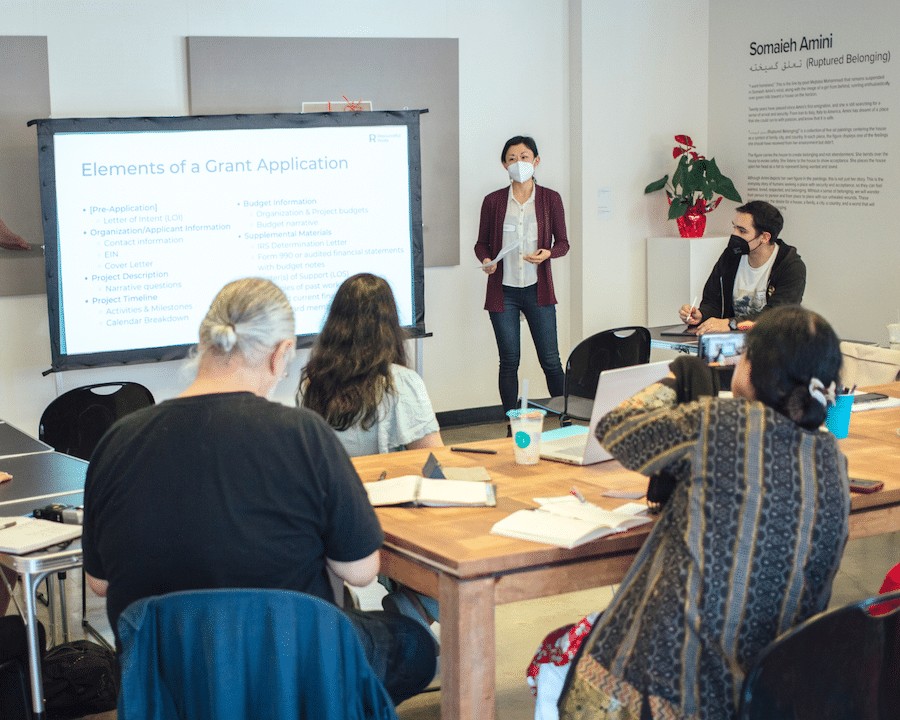Written by Miles Markestein, Development Director
For all our artists who struggle to navigate the overly-complicated and time-consuming world of artist grants: we understand. No one created the world of artist grants. It just happened, and now we all have to deal with the consequences.
Below is a quick guide for artists stepping into the world of grants. With luck, you’ll be funded soon and back to what’s truly important – creating art.
Step 1: Define Your Project
What project are you envisioning?
Within the arts, grants often fall under two categories: art project grants and community-focused project grants. If your project’s focus is an exhibition or performance, then you’re probably going to be looking for art project grants. If your project is a youth art class, or uses art therapy, you may want to look for community-focused grants. For this guide, we’ll be looking at art project grants.
Who is the applicant?
Unfortunately, this is a key question. Many grants require that a non-profit organization be the main grant applicant, with the artist (you) as the project’s “Lead Artist.” This arrangement requires a lot of trust between you and the organization, and often takes weeks to plan. Sometimes these grants allow you to have a non-profit organization act as a “fiscal sponsor” for the project instead, with the artist taking on most of the project’s responsibilities. ARTogether offers fiscal sponsorships to some smaller artist projects, and other larger projects on a case-by-case basis. (Contact us to learn more!)
Some art project grants, though, are centered on the artist. For most artists and creators, these are the grants to look for. They’re also often pretty competitive.
Step 2: Searching for Grants
For finding new grants, online lists of artist grants are your friend. There are several regularly-updated lists that you can find online, and one of the best is Dancers’ Group’s List of Grants, Residencies & Opportunities. The list is always up-to-date and beautifully organized for easy skimming.
ARTogether also regularly sends grant opportunities to artists in our network. If you’re an artist from an immigrant/refugee background, you can reach out to us at info@artogether.org if you’d like to connect with our Artist Growth program.
There are countless other ways to search for grants, but my personal favorites follow one simple mantra: stand on the shoulders of giants – or, better put – learn from thoughtful artists. Find an art project that shares qualities with your own project, and see what grants the artist received. You’ll often find the grants listed on the artist’s project webpage.
Step 3: Finding the Right Grant
A grant application can take hours to complete, so it’s important to check eligibility requirements to make sure you qualify. Look at when the grant’s start and end dates are, whether your location is eligible, whether or not you need an organization to apply, and whether your project fits the goals and mission of the grant and the grant-giving foundation.
The best way to see if your grant is a good fit is to look at the grant’s past recipients. This is a great opportunity to learn about the foundation’s mission in action, and to learn about other art projects that can inspire your own. You can also use these projects to discover what other art project grants the artist received, growing your grant list even larger.
Final Thoughts
For artists who are ESL or struggle with writing, ChatGPT and other AI platforms are wonderful tools. They can and usually are overused, but consider using AI for simple grammar support or for brainstorming answers to prompts. Most reviewers can tell when an application is written entirely with AI, but if you don’t go overboard it can be a great asset.
Happy hunting!



